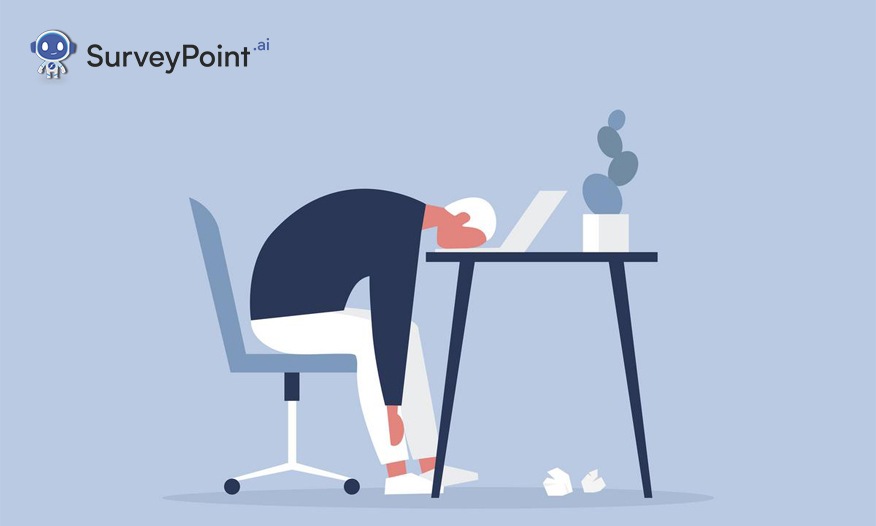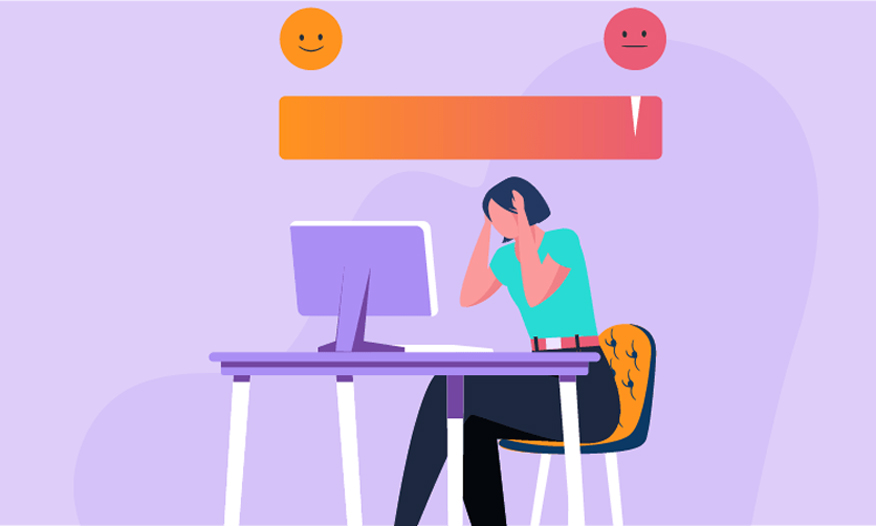
You know what they say: if you love your customers, you should give them more of what they want. But surveys are a different story. Surveys are an essential part of any business’s marketing strategy. However, they should be devised carefully to prevent them from backfiring. Since survey fatigue has been linked to research and data collection in recent years, the concept has gained immense attention.
It’s hard to resist the temptation to use surveys when they offer so many benefits. However, too much of anything can do more harm than good.
For instance, take ice creams. While it is a delightful treat, too much can make you sick. Similarly, people are getting sick of surveys. You know, the kind that requires too much effort, sends you on a wild goose chase, and makes you wonder if your time is worth it.
Let’s delve deeper by learning more about survey fatigue, its effects, and how to avoid it.
What is Survey Fatigue?
Survey fatigue occurs when a survey participant feels apathetic, bored, or simply tired with the survey process. This might lead to survey abandonment, poor results, or erroneous survey results.
Survey fatigue is a genuine phenomenon despite what may appear to be a nebulous concept. Among the four survey regions examined, Stanford University researchers discovered survey fatigue in three.
The Adverse Impacts of Survey Fatigue
Although it might not seem important if your surveys are not answered, too many questions can lead to long-term problems. As a result, this may lead to the following consequences, as shown by research on survey fatigue:
- Sending too many surveys will have a negative financial impact if you pay by the survey.
- Customers can start to think less favourably of your brand. They will probably perceive you as invasive, annoying, and a waste of their time and mental capacity rather than offering a high-quality product and first-rate customer service.
- The surveys you receive can contain erroneous information if you’ve asked too many questions or ones that aren’t relevant to that particular consumer.
- You will encounter survey bias when calculating your statistics. This implies a skewed outcome for your final results.
Getting your respondents irritated to the point where they want to run away screaming is the last thing you want to do. So, what is the answer to survey fatigue? Should we stop sending surveys altogether? Let’s explore this further.

Formulas for combating survey fatigue
Surveys are still an effective method of gathering information from your target audience. However, you can take many actions to guarantee that your respondents do not succumb to survey fatigue.
1. Identify the frequency at which you will survey
It would help if you considered the following factors while determining the optimum timeline for your organization:
- Are other departments in your company conducting surveys? If yes, how frequently?
- How frequently do your clients interact with you?
- What is the frequency and timeframe at which your competitors send out surveys?
2. Check the length of your survey carefully
While this varies based on the information you’re trying to gather, the general guideline is that the more basic and brief a survey, the better. Assume the role of your consumer and complete the survey yourself.
Is it getting longer? Are you asking unnecessary questions? If you’re annoyed, you can bet your consumers are, too.
3. Survey completion times should be kept in mind
Understanding how much time you’re asking is just as important as the number of questions you ask. Ideally, the respondents shouldn’t spend more than five minutes on it.
4. Take your time to focus on your questions
Your respondents will take less time and effort if you ask them questions with yes/no or multiple-choice answers rather than open-ended ones.
You can employ software like SurveyPoint.ai to include branching or skip logic and ensure that survey participants only see relevant questions. Also, after asking a few general or broad questions, you might inquire as to whether or not they have time to answer any further inquiries. Don’t bother your clients with unnecessary demographic questions that can irritate them and cause them to stop responding to the survey altogether.
5. The follow-up
Customer appreciation is essential. But you must take the extra mile. Don’t merely acknowledge receipt of their comments; show them. Let them know when it has been implemented. Customers are more inclined to fill out surveys in the future if they feel their opinions were taken seriously and acted upon.
Interested in learning more about survey best practices? Check out 5 Sure-fire Ways to Make Your Online Surveys More Effective
Over to You
While survey fatigue is a real issue for businesses, there are ways around it. Be strategic in disseminating surveys, and don’t flood people with questionnaires.
Making questions that are easy to understand, brief, and well-structured can help people stay engaged and reduce survey fatigue.
With SurveyPoint, you can check all of these boxes and more. Don’t believe us; try it risk-free for 14 days!
Heena Shah – Content Writer at Sambodhi




